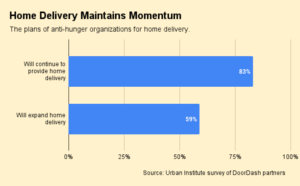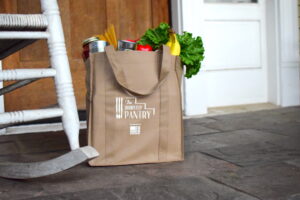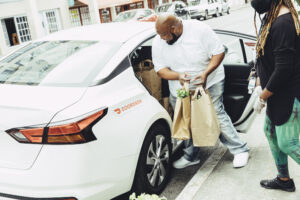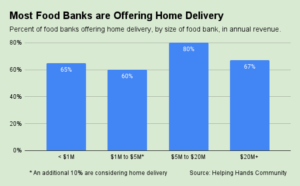Amazon and DoorDash have done a lot to help food banks and pantries rev up home deliveries, but they are not the only game in town when it comes to supporting home delivery.
Vivery Idea Lab
Vivery Idea Lab, an incubator founded by Chicago-based Thierer Family Foundation, last month announced a pilot that takes advantage of a local delivery company to support more personalized, in-home deliveries for people with disabilities or mobility issues. The Foundation’s hope is to create a new model for charitable home delivery that can be replicated in communities around the country.
Vivery’s approach stands apart from other standard models in a couple of ways. First, Vivery is working with a private delivery company called Delivery First that hires drivers from the community to work as regular employees, not gig contractors. The drivers, who are trained and insured, make deliveries to the same people each week, helping to build trust with food recipients. Finally, the drivers bring the food into recipients’ homes (and refrigerators), rather than leaving it on a doorstep.

“What we really wanted to focus on was what we call ‘in-home delivery,’ where the food is coming into the individual’s home,” said Ashley Friend, Managing Director at Vivery Idea Lab.
Home delivery is the latest iteration of the Vivery platform, which launched last year as a way to help people find and communicate with the food pantries closest to them. Recently, Vivery announced that eight food banks in Illinois have signed on to make Vivery’s “find food” map available through their websites. With the current focus on home delivery, Vivery is tackling what it sees as the next big barrier to food access, which is when people are physically unable to make it to a nearby food pantry, said Nasrin Thierer, Founder of Thierer Family Foundation.
In the current six-month pilot, Vivery is working with two Chicago city agencies to make up to 2,000 deliveries to 150 disabled individuals at a cost of $12.50 per delivery. The pilot builds upon an earlier one conducted with the Chicago-based hunger relief agency, Beyond Hunger. In that pilot, Vivery partnered with Delivery First to help whittle away Beyond Hunger’s 30-person waiting list for home delivery.
The success of that pilot led Beyond Hunger to contract with Delivery First to serve an additional 90 individuals, and it hopes to grow the program further. Working with Delivery First has enabled Beyond Hunger to reassign a staff member who was previously dedicated to recruiting delivery volunteers. In addition, Delivery First’s routing software has also helped the pantry reduce the time it takes to finish a route by about two hours. In all, the pantry is saving about 160 volunteer hours.
Vivery’s goal is to document its work so it can help other non-profits build their own home delivery programs. “Our hope and dream is to share our learnings with food banks and other cities on how to do this.” Thierer said.
Food Rescue Hero
Food Rescue Hero, a nonprofit that deploys volunteer drivers to rescue food, recently announced that it is expanding its home delivery program. Launched in 2020 in response to the pandemic, the home delivery program has so far delivered about 200,000 pounds of food to 1,200 households in Pittsburgh and Northern Virginia through two partners. Now, the goal is to work with partner organizations nationwide to home-deliver one million pounds of food by the end of 2023, said CEO Leah Lizarondo.
At 200,000 pounds, home deliveries make up a small portion of Food Rescue Hero’s overall volume. Since its start in 2016, the organization has diverted 115 million pounds of food to pantries and other partners, which then redistribute it. But diverting food to homes had always been part of the plan, Lizarondo said. “We were waiting for enough of a driver pool to manage deliveries to individual homes,” she said.
Food Rescue Hero works with food pantries and hunger relief organizations to identify people who need home deliveries. “It’s all about reaching a segment of the client base that pantries and other food access organizations are trying to reach, but cannot,” Lizarondo said.
Especially given consumer trends toward convenience, Lizarondo said the number of drop-off points for home delivery has the potential to grow to be much higher than for non-profits. “We’re optimistic,” she said. “We’re looking forward to growth in the next couple of years.”
Homegrown Volunteers
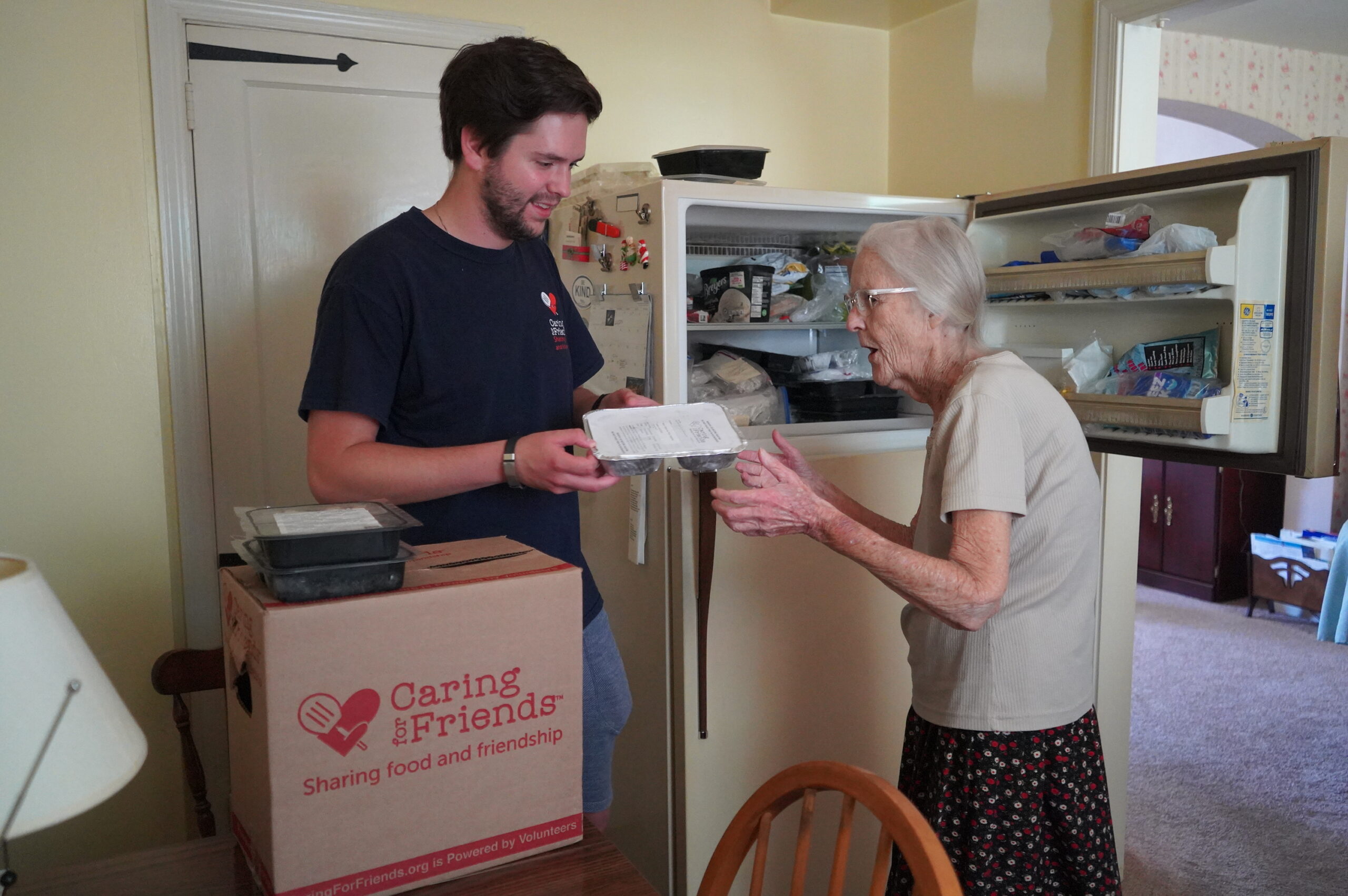
For nearly 50 years, Philadelphia-based Caring for Friends has built up and nurtured a vast volunteer force that cooks and delivers meals, while also visiting with clients. Its success in igniting a volunteer workforce highlights another pathway food banks can use to address the demands of home delivery.
The non-profit dates its origins to 1974 when Founder Rita Ungaro-Schiavone cooked and delivered meals to a single elderly woman, and made it a point to spend time with her. The organization, now run by her son Vincent, has since grown to encompass 10,000 volunteers and 200 food pantries in five counties, providing about 3.5 million meals to some 300,000 people in 2022. “We want to do both food and friendship because they’re both important. Being lonely is just as debilitating,” Schiavone said.
Caring for Friends relies on a federated model that keeps all the volunteer activity as local as possible. Meals are cooked by volunteers mostly at Caring for Friends’ facility, but also at other kitchens and homes around the city. They are then delivered directly to individuals or to freezers at area distribution points where they can be picked up and delivered. “Organizing the hubs helps us do more sharing and more groups,” Schiavone said, noting that organizations with multiple groups in an area, like Rotary Clubs and Boy Scout troops, are especially good sources of volunteers.
He added, “Making it easy for people to volunteer is really important.” – Chris Costanzo
Like what you’re reading?
Support Food Bank News
This article was made possible by the readers who support Food Bank News, a national, editorially independent, nonprofit media organization. Food Bank News is not funded by any government agencies, nor is it part of a larger association or corporation. Your support helps ensure our continued solutions-oriented coverage of best practices in hunger relief. Thank you!
Connect with Us:

